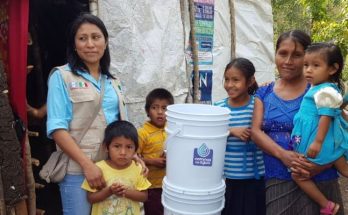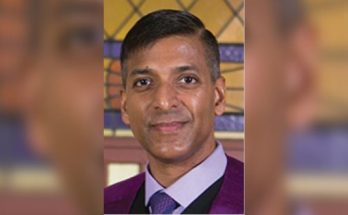By Robert Hawkins
On a recent Monday afternoon, four prominent San Miguel de Allende physicians took turns unraveling the mysteries of obtaining good medical care as a gringo in Mexico.
The event, titled “Mexico, Medicine, and Me: General and Urgent Care,” is the first in a series at the Biblioteca on this theme.
The four physicians were Dr. Roberto Luis Maxwell Martinez, “dean” of medical practitioners in San Miguel and a critical care specialist; Dr. Grace Lim, internal medicine physician and lifetime resident of San Miguel; Dr. Ricardo Gordillo, founder of The Clinic, general medicine physician, and stem cell researcher; and Dr. Emilio Ramirez, an emergency medicine physician.
The advice was both practical and rich in common sense steps—but also, the kind of stuff so very few people practice until they find themselves in the middle of a medical emergency.
For example, when an expat walks into a local hospital, the first thing they’re likely to encounter is a language barrier. In the public hospital, of which there is one in San Miguel, almost nobody speaks English. Your odds of finding bilingual staff increase in the private hospitals.
All the same, “Be patient,” Dr. Maxwell urges.
At the very least, learn some key phrases that will help staff understand your problem.
But there is much to be done before you are en-route to the hospital with a heart attack, a stroke, or a broken hip.
Step one, the doctors all say, is find yourself a primary care physician, of whom there are many excellent ones here in San Miguel.
Start by asking your friends and acquaintances who they recommend. Don’t wait until you are sick. Sign up for an introductory consultation.
“Your first consultation has to click,” Dr. Lim says. “If not, find another doctor.”
Ask which hospital your doctor is affiliated with. In an emergency, that’s where you want to end up. Once you know whether it’s La Joya or MAC, the two main critical care hospitals, sign up for a tour. Get familiar with the hospital, staff, and layout.
Most interestingly, the doctors say your first call in an emergency should be to your own doctor rather than 911 or Cruz Roja. Dr. Lim sees the primary care physician as your “team leader” in a medical emergency. Your doctor can get an ambulance, alert the hospital, provide medical details, give you quick advice on how to mitigate your problem, and meet you there.
Your primary doctor knows your medical history, what medications you take, what allergies you have, your blood type, and plenty of other medical and personal knowledge that the hospital emergency care staff will find invaluable. All things an emergency responder needs to know and needs to ask, most likely in Spanish.
As Dr. Ramirez put it, “Time is life.” Don’t waste it.
“I’d rather have a patient call me at 2 or 3a.m. than call 911 or Red Cross,” said Dr. Maxwell.
Of course, if you can’t reach your own doctor, call for an ambulance, but give your doctor’s name to the admissions staff as soon as you reach critical care. They will contact your doctor.
Long before we reach the emergency stage, there are many things you can do to improve your chances of surviving an emergency.
Draw up a list of phone numbers: your doctors, your hospital, 911, Red Cross (Cruz Roja, the ambulance service in San Miguel), your family, your key friends and contacts, your patient advocate. Keep it handy and updated.
Next, keep handy your medical records, including x-rays, blood test results, MRI results, prescriptions, allergies, medical history, insurance card, etc. Unlike in the United States or Canada, medical records are portable here. You take them from doctor to doctor to specialist to hospital.
Gather all of those medical records into what Dr. Gordillo calls a “go-to bag.” This is something many Mexicans learned the hard way during the earthquakes in Mexico City. You need all of your necessities in one bag, ready to go in an instant. Include your insurance information, contact information, a cache of cash, or other means to pay your medical bills.
That’s right, cash. Hospitals want an upfront fee (cash or credit card) or deposit. It’s just how things work here. Even if you have insurance, you can get reimbursed later.
You can include a “do not resuscitate” letter. This is a directive to medical staff to not go to extraordinary means to keep you alive in the event of a debilitating stroke or injury. It’s called an advance directive. It should be signed, witnessed by two people, and notarized.
If your spouse or partner or doctor is aware of your wishes, they can accomplish the same directive but best to have the paperwork in order. The good news is you can change your mind at any moment before the plug is pulled.
Your chances in an emergency improve if you have a spouse, partner, professional advocate, or friend battling for you. The reality is many in San Miguel are single and live alone. The doctors urge people to form circles of support—key friends or neighbors who can step in, know where all your medical information is located, and fight for your care, or act on your behalf, as you would do for them.




